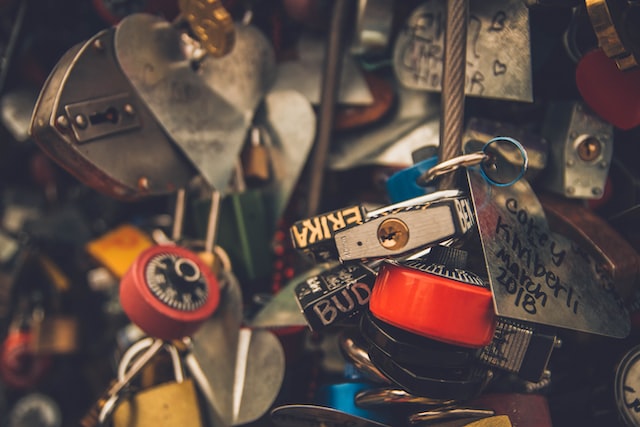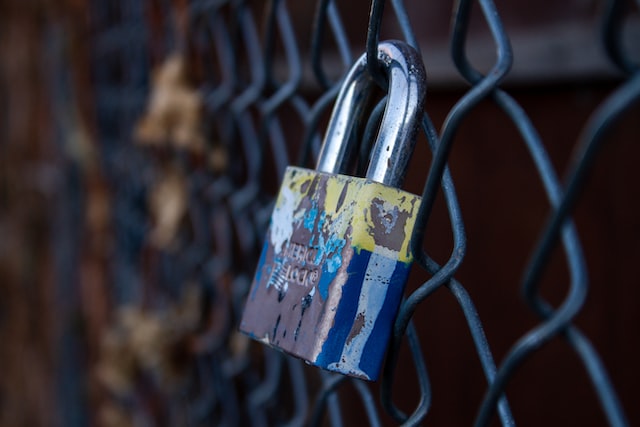As a household, business, or even government institution, you need the best possible security solutions available. With that in mind, one of the most important components of any secure space is the padlock. Padlocks come in all shapes and sizes—from combination locks to smart locks and more. To help you make an informed decision when selecting a padlock for your space, this blog post will compare and contrast different types of padlocks so you can find the ideal solution for your needs. From standard lock-and-key options to high-tech digital solutions, read on to learn more about the advantages and disadvantages of various kinds of padlocks.
Different types of padlocks
There are many different types of padlocks on the market. Some are more secure than others. Some are more expensive than others. Here is a comparison of different types of padlocks:
1. Warded padlocks: These padlocks have internal wards that prevent the lock from opening unless the correct key is inserted. They are relatively inexpensive and can be found at most hardware stores. However, they are not very secure since experienced lock pickers can easily open them.
2. Lever tumbler padlocks: These padlocks have internal levers that must be aligned in the correct order before the lock can be opened. They are more secure than warded padlocks but still relatively easy to pick.
3. Pin tumbler padlocks: These are the most common type of padlock. They have cylindrical pins that must be aligned in the correct order before the lock can be opened. They are very secure and difficult to pick, but they are also more expensive than other types of padlocks.
4. Combination locks: These locks do not require a key; instead, they can be opened with a combination of numbers or letters. They are very secure but also more expensive than other types of padlocks.
Advantages and disadvantages of each type
Different padlocks offer different advantages and disadvantages, depending on the design and materials used. Here is a comparison of some of the most common types of padlocks:
1. Warded Padlocks: These padlocks have a simple design with a small keyhole and wards (internal obstructions) that prevent the wrong key from being inserted. They are relatively inexpensive and easy to use, but can be picked by experienced lock pickers.
2. Lever Tumbler Padlocks: These padlocks have a more complex design with a series of levers that must be aligned in the correct order before the lock can be opened. They are more difficult to pick than warded padlocks, but still possible for experienced lock pickers.
3. Pin Tumbler Padlocks: These are the most common type of padlock, and use a series of pins that must be aligned in the correct order before the lock can be opened. They are very difficult to pick, but can be defeated by experienced lock pickers or by using brute force (breaking the shackle or body of the lock).
4. Disc Detainer Padlocks: These padlocks have a series of discs instead of pins that must be aligned in the correct order before the lock can be opened. They are even more difficult to pick than pin tumbler locks, and are considered virtually unpickable by even the most experienced lock pickers.
5. Magnetic Padlocks: These locks use
Comparison chart of padlocks
There are many types of padlocks on the market today, each with its own advantages and disadvantages. To help you choose the best padlock for your needs, we’ve compiled a comparison chart of the most popular padlock types.
– Standard Padlocks: The most common type of padlock, standard padlocks are usually made of brass or steel and have a simple design. They are relatively inexpensive and easy to use, but can be easily picked or cut open with the right tools.
– High Security Padlocks: These padlocks are designed to resist picking, cutting, and other forms of attack. They are often made of hardened steel or stainless steel, and may have additional security features like auxiliary locking mechanisms. High security padlocks can be more expensive than standard padlocks, but they offer significantly more protection.
– Combination Padlocks: Combination padlocks do not require a key to open, making them more convenient than other types of locks. However, they can be difficult to reset if you forget the combination, and some models are not as durable as other types of locks.
– Keyless Entry Padlocks: Keyless entry padlocks offer the convenience of not having to carry keys, but they require batteries to operate and may not be as reliable as other types of locks in extreme weather conditions.

How to choose the right padlock for you
There are many different types of padlocks on the market, and it can be difficult to choose the right one for your needs. Here are a few things to consider when choosing a padlock:
-The level of security you need. Some padlocks are more secure than others, so if you need a high level of security, make sure to choose a lock that is rated accordingly.
-The environment the lock will be used in. If the lock will be exposed to harsh conditions, make sure to choose one that is weather-resistant.
-The size of the lock. Make sure to choose a lock that is the right size for the application – too small and it can be easily cut; too large and it may be difficult to use.
-Your budget. Padlocks come in a wide range of prices, so make sure to choose one that fits your budget.









